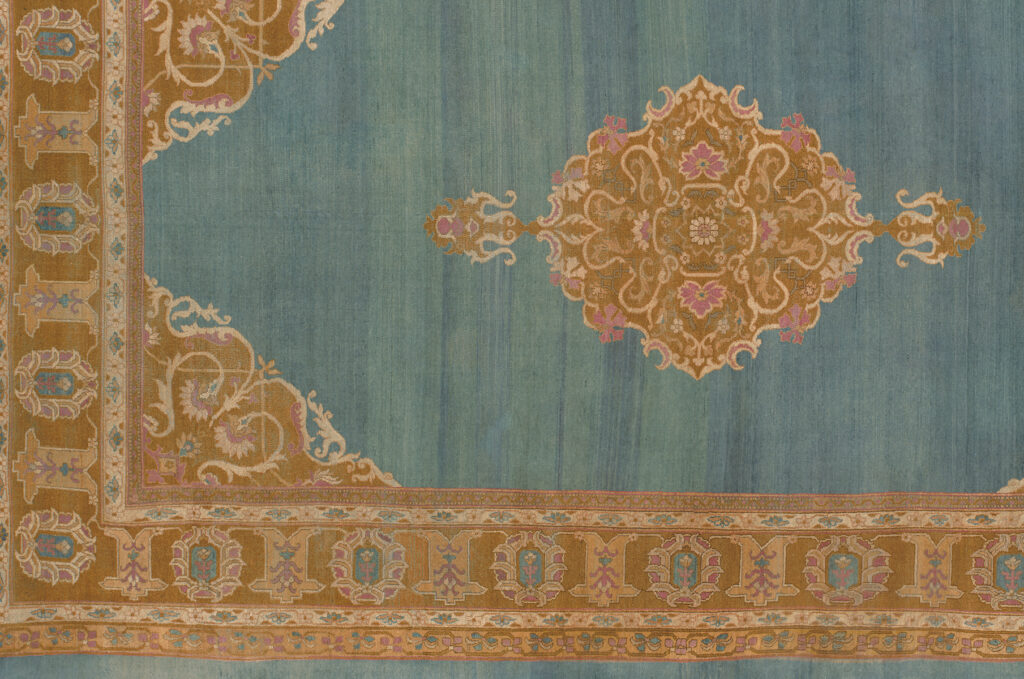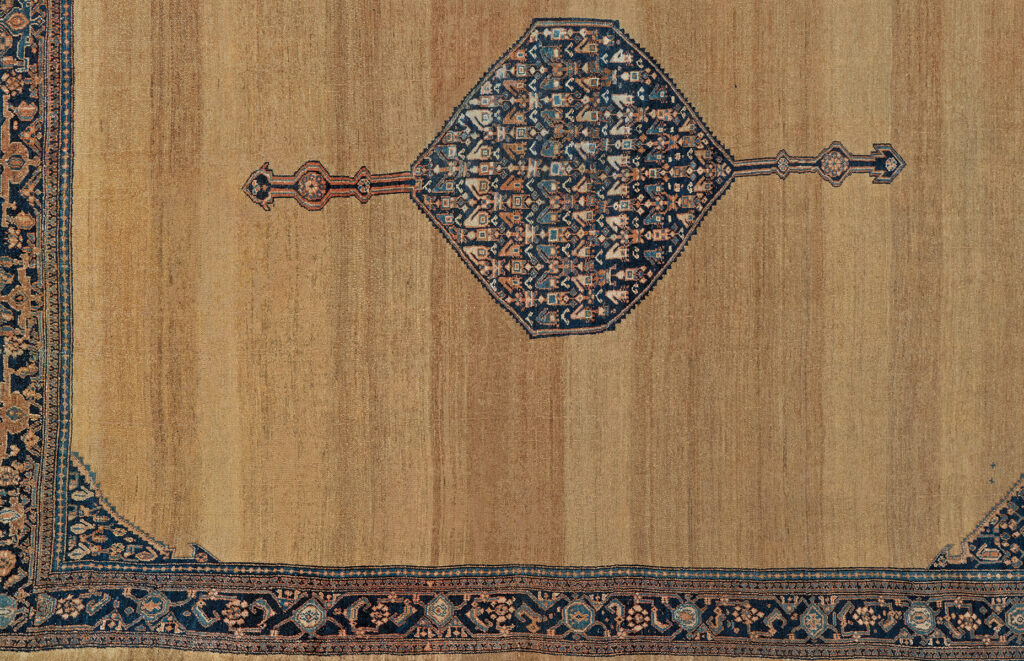What is abrash? How to identify it?
Authentic oriental rugs are handmade with hand-spun yarns rather than machine-made. It is characteristic of handmade rugs to present a pattern that includes colour variations, shades, and hues. These colour variations are known as abrash and are one of the striking features of authentic oriental rugs. Rugs with abrash are standard among the rugs of older nomadic peoples.

A legitimate abrash colouring has specific areas of solid colour with a variety of gradations. These variations will primarily appear as horizontal stripes, although other shapes are also possible. In some cases, the variations of the abrash are just a tiny difference between the shades of the colour, while in other cases, they can be distinct and stand out with evidence.
Contemporary rugs often try to mimic these shade variations. Even machine-made rugs can try to reproduce the abrash effect, but they rarely succeed because the colours of machine-made rugs are always much more consistent and accurate. The reason for this is that machines are much more precise than humans. The human eye, the tools, and the means artists use to make their rugs are not exact. The consequence is a work that produces a much more natural and imperfect appearance than machine-made rugs.
The word abrash means spectrum in Farsi. In oriental rugs, the term is used to describe the visible variations and changes in colour in the rug area. The abrash is often created due to variations in wool yarns dyed with natural dyes. Although the colours may seem the same when the rug is woven, manufactured dyes vary slightly. As a result, each batch of wool yarns will appear slightly differently over the years. This results in the abrash effect – stripes of different shades of the same base colour.
While some people may look at the abrash and think of them as “imperfections”, they are not defects in reality. Instead, they are the innate feature of the variables of the dyes that naturally occur when materials are handmade and hand-dyed. At the same time, some may prefer the more uniform appearance of a machine-made replica, most like the original and unique distinctions that the manual weaving process brings. For these, the resulting colouring of the abrash adds a distinct beauty to the rugs and makes them a much more valuable work of art. Indeed, most of the best connoisseurs and collectors of rugs value the unique beauty that the abrash colouring offers.

Abrash is so appreciated that many of today’s manufacturers, who produce the highest quality rugs, spend a lot of time and energy trying to recreate this visual effect. Although they achieve some degree of success, there is still nothing as beautiful as an old handmade rug. Rug collectors are often particularly attracted to the most creative and eye-catching abrash found in old rugs.
So, suppose you are considering buying an antique oriental rug for your home. In that case, it is essential to be aware that the marks you see as errors, imperfections, repairs, or restorations are the marks that give the rug its most significant value.

When buying rugs, inspect them to determine the origin of the colour variations. Keep in mind that abrash stripes may be part of the original intended design, may be variations in the dye lots, different lots of dyed yarns, the natural result of the ageing process, or sun fading. Regardless, the abrash is like a fingerprint. There are no two alike, and each one is extraordinary.

Figalli Oriental Rugs
We do not sell rugs. We bring rare works of art to your home in the form of rugs.
Our services
You are Protected
Copyright © 2023 Figalli Oriental Rugs, All rights reserved. Desenvolvido por Agência DLB – Agência de Marketing Digital em Porto Alegre
